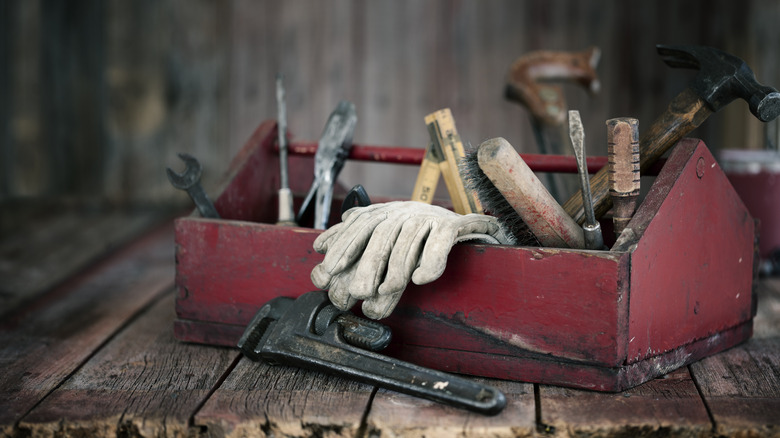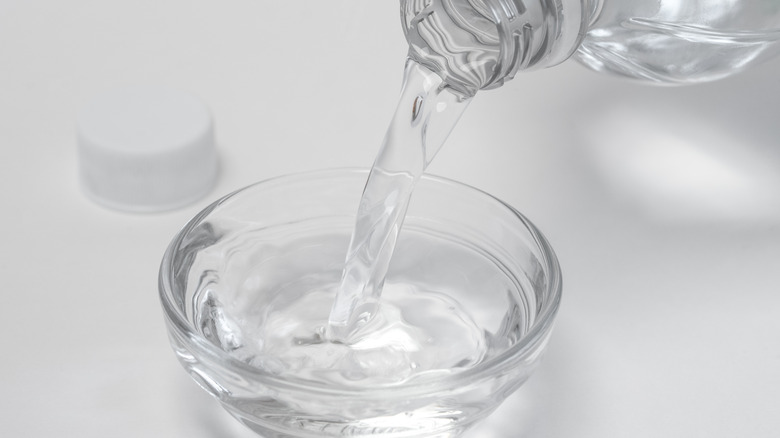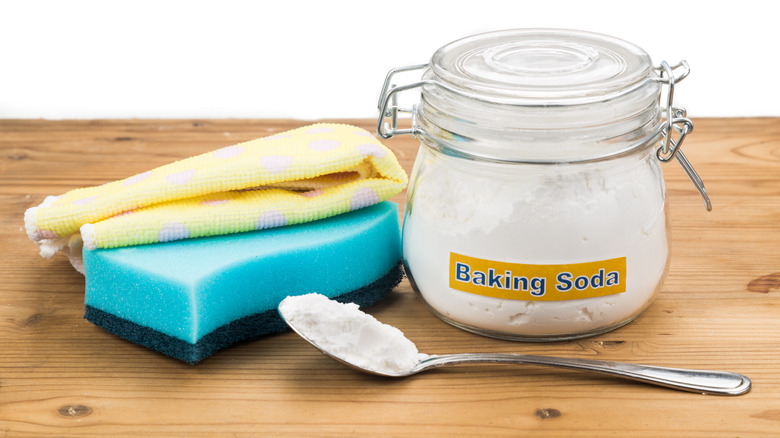Give Your Household Tools A Much Needed Clean With These Baking Essentials
You may not know this, but it's important to clean your household tools to keep them in good condition and prevent having to repurchase them. Unfortunately, this process can be time-consuming. Cleaning becomes complicated if you have to go out and purchase specific cleaning solutions for each tool. This can also get pretty expensive. However, there is an easier way to get your household tools clean again, using products you probably already have in your home. Vinegar, salt, baking soda, and WD-40 can remove rust, grime, and other buildup from your tools without causing damage.
This cleaning process is simple, but there are a few things you need to keep in mind to clean your tools effectively. First, it is important to remember that power tools must be cleaned differently than hand tools. Power tools cannot be submerged in water due to their electrical components. Still, they can be cleaned just as thoroughly as hand tools as long as you are mindful of their care instructions. These methods will help you clean both your power tools and your hand tools safely using affordable products you can find almost anywhere.
How to clean hand tools with vinegar and salt
You may have come across long lists of harsh and expensive cleaning products when researching how to clean and disinfect your tools in the past. Thankfully, tools can be cleaned just as thoroughly without specialized cleaning agents. To clean grime and rust off of hand tools, try using this simple vinegar-and-salt solution.
First, grab a container into which all of your hand tools will fit. Place the tools inside. Next, fill the container with vinegar. Make sure to pour enough to cover your tools completely. Pour ¼ cup of salt into the container for every liter of vinegar you use. Make sure to pour the salt evenly across the container.
Allow your tools to soak until the rust and grime break down to reveal shiny, clean tools. This can take up to three days, so plan accordingly. You may check the container to monitor progress and determine when your tools are ready for the next step. After most of the residue has been broken down, scrape off any remaining loosened residue with a metal brush or steel wool. Finally, wash the vinegar solution away and dry the tools thoroughly to prevent rust. You may use WD-40 on any tools with moving parts and apply a protective oil to prevent rust as well.
The baking soda method and how to clean power tools
Baking soda is also a great option for those looking to clean tools with ingredients they may already have at home. Some DIY enthusiasts recommend soaking tools in baking soda and water for 10 minutes after the vinegar and salt cleaning process. However, baking soda can also be used to remove rust on its own.
For this method, first clean and dry your tools to get rid of grease and other debris. Next, add equal amounts of baking soda and water to a container to create a paste. Apply this paste to your rusty tools and let them sit until you notice the rust has been loosened. Scrub the paste off, rinse with water, and dry completely. Just as with the vinegar and salt method, be sure to apply WD-40 to your tools with moving parts and coat the appropriate tools with a protective oil to prevent future rusting.
To safely clean power tools, start by using compressed air to blow debris away from nooks and crannies. Be sure to wear safety gloves when dealing with sharp edges. Next, disassemble the tool and clean each component with WD-40 Specialist Degreaser. You may scrub your tools with this product using steel wool or use a toothbrush in hard-to-reach areas. The metal parts not connected to any electrical components may soak in the aforementioned vinegar solution. Use a lightly dampened towel to wipe down the rest of the tool. Ensure all parts are completely dry before reassembling.


